|

    
  
THE ISSUE: AIR QUALITY
 The consequences of poor air quality on health are well known to most New Jersey residents. However, we often don’t think about the overlapping effect that this can have on our daily lives and overall experience within the state. According to the New Jersey Department of Health there are over half a million cases of adult asthma, with over 150,000 cases regarding children. While these numbers are significant on their own there are likely a large number going unreported as well. The consequences of these cases are not just hospital visits; they are absent days from school for thousands of children, and missed days of work for their parents, or for adults suffering from poor air quality themselves. The consequences of poor air quality on health are well known to most New Jersey residents. However, we often don’t think about the overlapping effect that this can have on our daily lives and overall experience within the state. According to the New Jersey Department of Health there are over half a million cases of adult asthma, with over 150,000 cases regarding children. While these numbers are significant on their own there are likely a large number going unreported as well. The consequences of these cases are not just hospital visits; they are absent days from school for thousands of children, and missed days of work for their parents, or for adults suffering from poor air quality themselves.
The air we breathe is the one most forgotten but constant factors in both our everyday experiences and overall lives. No matter where one lives within our state the ability to breathe safe and clean air is essential to maintaining a healthy life. As of the current year a variety of conditions still stand in the way of many areas of New Jersey having the best air quality possible, with the affects being felt in all facets of life.
INDOOR AIR QUALITY
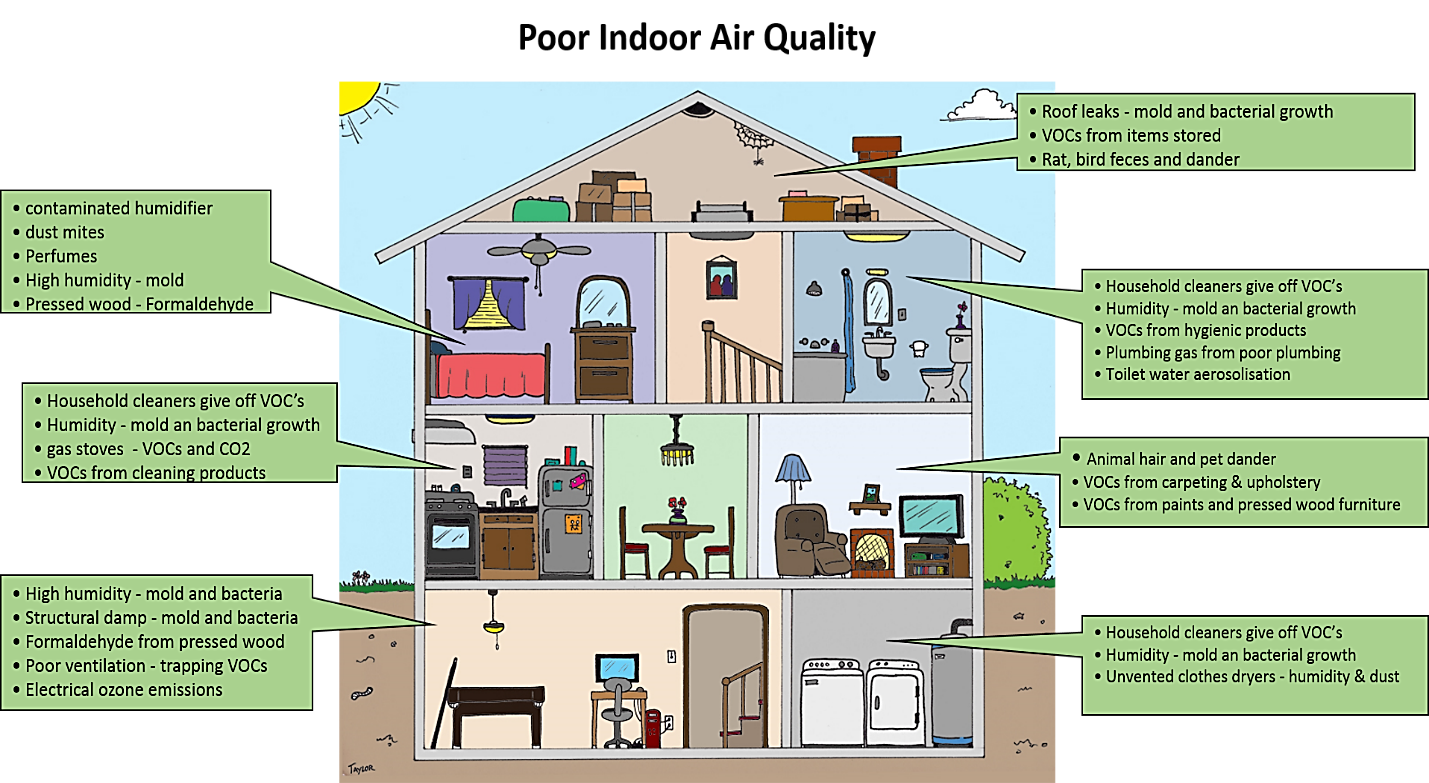
Indoor Air Quality covers the state of the air in nearly any interior such as homes, schools, offices, and other buildings. Many factors should be considered when discussing or thinking about indoor air quality. Below are some examples of factors that often go unconsidered:
- The average American will spend around 90% of their time indoors. Unfortunately, many types of pollutants can be found in concentrations up to five times higher inside than those of the same pollutant found outside.
- The elderly and young children are at higher risk for cardiovascular complications due to spending more time indoors than the rest of the population.
- A rise in synthetic home and personal care products along with new energy-saving designs in construction have caused air circulation and quality to drop in many areas and properties.
- An estimated 1/3 of structures have air conditions promoting mold
- Sources such as second-hand smoke are much more prevalent indoors and can increase the likelihood of lung cancer by as much as 30%
[Source: Environmental Protection Agency]
Common Sources of Indoor Air Pollution
There are many conditions that can lead to poor air quality, in addition to a variety of sources. While the amount of pollutants that can deteriorate the quality of air indoors is large the following examples are some of the most common:
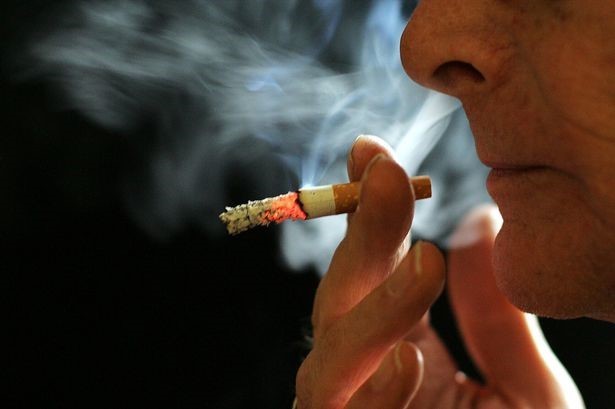 Tobacco Tobacco
Tobacco usage remains as one of the most detrimental factors in regards to indoor air quality, with an estimated 1 in 7 NJ adults still smoking cigarettes regularly in 2020. These rates in addition to lung cancer being the leading cause of cancer-related deaths in our state paint a clear picture about the damage that tobacco can cause to the air we breathe. Unfortunately, as with most pollutants tobacco usage’s detriments are not contained to an individual, with second hand smoke causing health issues for all within its range.
-
Mold
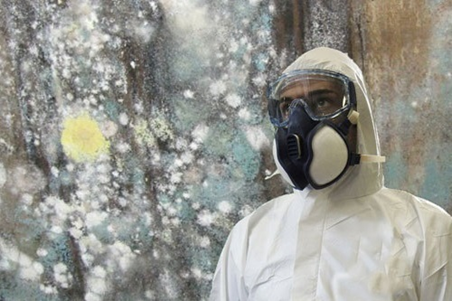 Within multiple interiors mold can be one of the largest contributing factors to a low quality of air, and asthma attacks in particular. Mold by itself should always be regarded as a health risk to everyone living and working indoors, and this risk must be taken with much more significance for an individual or group with respiratory conditions. Within multiple interiors mold can be one of the largest contributing factors to a low quality of air, and asthma attacks in particular. Mold by itself should always be regarded as a health risk to everyone living and working indoors, and this risk must be taken with much more significance for an individual or group with respiratory conditions.
Multiple locations where mold can build up are:
*Areas with poor air circulation where ventilation does not reach
*Use of a humidifier can worsen this
*Bathrooms that do not possess exhaust fans
*Unmaintained dehumidifier filters
*Moist collection trays on refrigerators
*Leaking pipes and other water-based fixtures
- Man-made and chemical pollutants
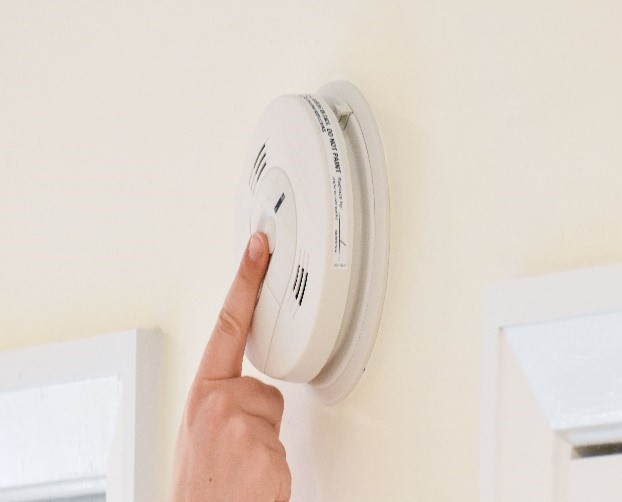 Despite great strides in reducing the use of harmful materials and chemicals many older homes were often constructed under more lenient standards. As a result, some homes and buildings within New Jersey can contain or have been built upon various materials such as asbestos, lead, and radon. Beyond existing materials within or around an interior are those which can accumulate over time, with one of the most infamous being carbon monoxide. Pollutants like carbon monoxide pose not just a long-term health risk, but are extremely dangerous in large concentrations, meaning that detectors should be present, and checked regularly. Despite great strides in reducing the use of harmful materials and chemicals many older homes were often constructed under more lenient standards. As a result, some homes and buildings within New Jersey can contain or have been built upon various materials such as asbestos, lead, and radon. Beyond existing materials within or around an interior are those which can accumulate over time, with one of the most infamous being carbon monoxide. Pollutants like carbon monoxide pose not just a long-term health risk, but are extremely dangerous in large concentrations, meaning that detectors should be present, and checked regularly.
OUTDOOR AIR QUALITY
“Outdoor climate and weather conditions combined with occupant behavior can also affect indoor air quality. Weather conditions influence whether building occupants keep windows open or closed and whether they operate air conditioners, humidifiers, or heaters, all of which can affect indoor air quality. Certain climatic conditions can increase the potential for indoor moisture and mold growth if not controlled by adequate ventilation or air conditioning.” – EPA.gov
- According to the American Lung Association’s latest “State of the Air” report New Jersey’s outdoor air quality has been steadily improving over the years
*-However, its metropolitan areas still rank within the top quarter of the most polluted areas within the nation
- According to the same report 9 out of 15 counties within New Jersey have received an F in regards to their smog levels
- Research from Harvard University has concluded that poor air quality puts those affected at a higher mortality risk for airborne pathogens such as COVID-19
[Sources - American Lung Association NJ Press Release, Mom's Clean Air Force, Harvard U.]
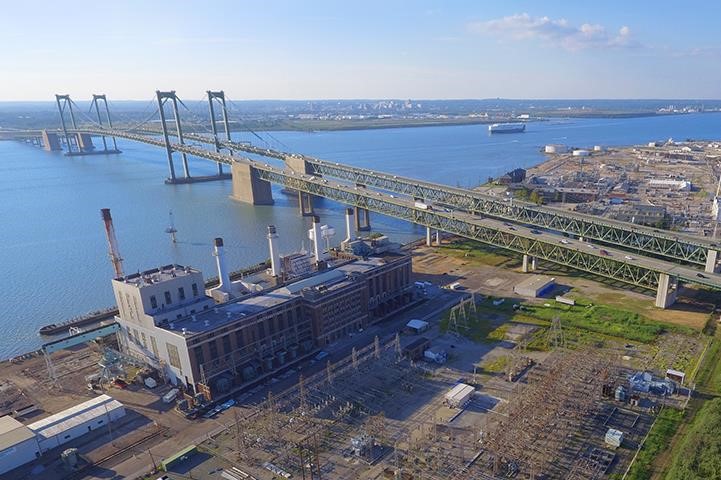 Common Sources of Outdoor Pollutants Common Sources of Outdoor Pollutants
- Vehicle emissions
- Construction projects and materials
- Chemical manufacturing
- Natural disasters facilitating dust, mold, smoke, and other irritants
ASTHMA
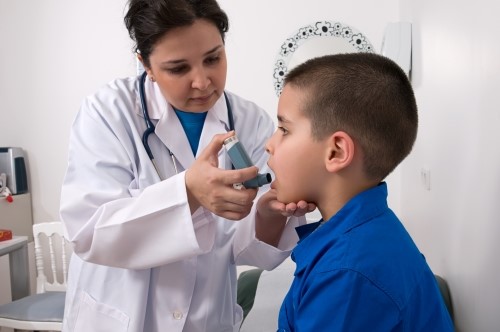 Asthma is an unfortunate condition which far too many children and adults within New Jersey are affected by. While it’s obvious and most immediate consequence is making the act of simply breathing more difficult for residents with it, asthma also prevents those afflicted from living the most physically active and productive lives possible. Below are some facts on asthma’s prevalence and consequences within New Jersey: Asthma is an unfortunate condition which far too many children and adults within New Jersey are affected by. While it’s obvious and most immediate consequence is making the act of simply breathing more difficult for residents with it, asthma also prevents those afflicted from living the most physically active and productive lives possible. Below are some facts on asthma’s prevalence and consequences within New Jersey:
- The New Jersey Department of Health estimates that as of 2021 more than 600,000 adults and 160,000 children have asthma
*Put more simply it is believed that approximately 1 in 10-11 New Jersey residents have asthma
- While asthma is a condition faced by all ages, genders, and ethnicities, African-Americans and Hispanics in urban areas are at the highest risk
*For example, the City of Camden was recorded as having a chronic asthma rate of almost 12% in recent years
- Certain counties within New Jersey face higher rates than others with Atlantic, Camden, Cumberland, and Essex Counties facing asthma hospitalization rates higher than 10 per 10,000 residents
- On a national level it is estimated that asthma has accounted for approximately 13 million missed school-days for children and 14 million missed workdays for adults over a 6 year period
*These figures have lead some authorities to conclude that asthma costs the nation over 50 billion dollars a year in missed work
With the personal and economic cost of asthma and poor air quality being as high as it is, there is no reason for those in power to ignore the toll it takes on our friends, neighbors, and families. If we are to say that those who call New Jersey home should be able to live the healthiest and most productive lives possible, we must start with one of the simplest but consistent factors in our lives: the air we breathe.
[Sources - NJDOH and Center for Disease Control]
RESOURCES
|

